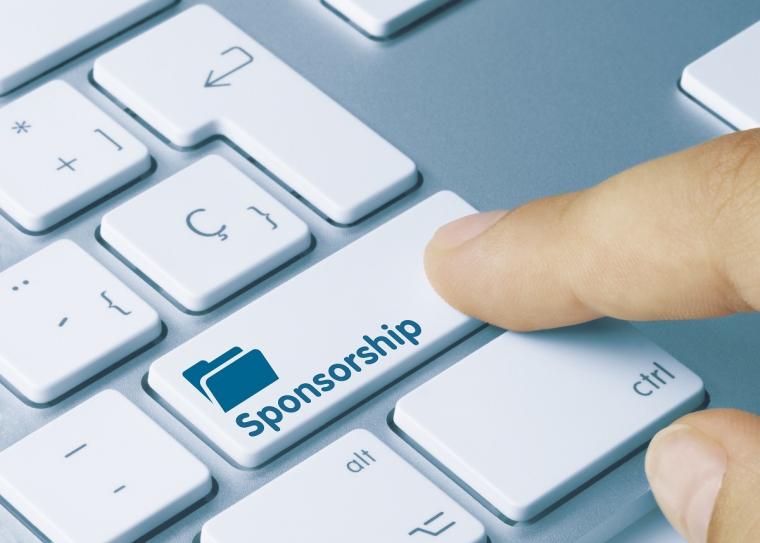

Merchandising is a key revenue driver in the sports industry, especially for professional leagues, big-time intercollegiate athletics programs, and one-off community events such as a charity road race, championship tournaments, etc.
Sport organizations such as a racetrack, local fitness center, a travel team, or a private golf club can also profit from the sale of logo merchandise. Merchandising ultimately transforms fans and members into walking and driving billboards when they proudly wear their team’s jersey or place a logo sticker on their car signaling that they are part of a sport-based tribe.
The Professional and Collegiate Market
The history of sport merchandising can be traced back to “tobacco cards” placed inside cigarette packs which featured baseball stars like Ty Cobb and Babe Ruth. Professional baseball continued to be an avenue for driving consumer brand preference when Lou Gehrig appeared on the first Wheaties cereal box in 1934 along with the popular slogan, “Breakfast of Champions.”
The partnership between brands acquiring the rights to use sport logos on products has been a lucrative business model for professional and collegiate teams. From bobbleheads to T-shirts and jerseys to golf carts bearing a team logo, the revenue from savvy merchandising deals are often insane. According to the accounting firm PricewaterhouseCoopers, the global market for licensed sports merchandise estimated at $34.4 billion in the year 2020 is projected to reach $49.8 billion by 2027, growing 5.4 percent over the analysis period between 2020-2027.
The 2020 U.S. market value for collegiate and professional licensed sports merchandise is estimated at $14.82 billion with the MLB and NFL generating approximately $4 billion each from the sale of products bearing team logos. The MLB New York Yankees and NFL Dallas Cowboys have long-standing traditions of ranking as the top merchandise selling team in their respective leagues.
Approximately one-third ($5 billion) of the U.S. market is connected to the annual retail sales of royalty-based licensed collegiate merchandise. The top three institutions profiting from logo merchandise sales annually are the University of Alabama Crimson Tide, University of Texas Longhorns and the University of Notre Dame Fighting Irish. IMG’s Collegiate Licensing Company claims upward of 80 percent of the college market in partnering with institutions.
According to the 2021 Sport Marketing Handbook, the most popular types of logo sport apparel are T-shirts, women’s fleece, men’s/unisex fleece, and headwear while the most popular categories for non-apparel logo products include video games, domestics and household products. Adventure sport merchandise is a relatively new growth area according to a global market insight report spanning 2021-2031.
Strategies for Sport Merchandising
An organization or agency in the sports industry doesn’t need to be connected to a college or professional team to capitalize on the lucrative business of merchandise sales. Sport organizations both large and small have discovered that selling merchandise bearing their own logo can potentially be a great source of income.
The popularity of T-shirt sales has made them a consistent revenue driver for local, state and national sport events such as the Senior Games, Arnold Classic, Boston Marathon or a community Tough Mudder obstacle race. Similarly, sport facilities such as Sports Force Park in Sandusky, Ohio or ESPN Disney in Orlando, Florida have derived tremendous financial benefit from sport merchandise sales.
The Internet has made designing and ordering products relatively easy through e-businesses such as 4Imprint, Discount Mugs and VistaPrint. While bulk ordering lowers the purchase price, the key is to yield a relatively high profit margin on each item by setting retail prices at a point that moves inventory through sales. Following are six tips for any sport organization that aspires to tap into the projected growth of the licensed merchandise business:
1) Make Data-Driven Decisions: Use data to drive your pricing decisions and merchandise assortment options. Market analysts at companies such as Experfly and intelligence software such as Block Six, Zoomph and Blink Fire can provide valuable insight on sales trends while also tracking consumer behavior habits within your own internal CRM databases. Don’t guess what your fans or participants will want based on your own consumption habits. Follow the numbers to create a data-driven strategic merchandising assortment.
2) Expand Your Market Appeal: Think beyond traditional target markets. Provide merchandise that appeals to diverse groups such as your female fan base, babies and the LGBTQ+ market. Clearly demonstrate your inclusive environment and organizational culture through diverse merchandising assortments.
3) Diversify Marketing Strategies: Don’t rely solely on one channel to communicate your message. Create a diversified and integrated marketing communications plan that engages your consumer personas. Meet the consumers in their preferred space.
What platforms are your top consumers using? For the second straight year, consumers across the globe reported being most receptive to ads on TikTok, followed by Amazon, Instagram and Google, according to findings of the 2021 edition of a global consumer ad equity study released in September. In addition to message placement, an effective strategy to diversify distribution is by using integrated marketing communication methods that stretch over areas such as paid advertising, personal selling, public relations, direct messaging, social media and sales promotion (couponing).
4) Intentionally Drive Active Sales and Create Urgency At Events Using Geofencing: Use push messaging to geo-capture and drive immediate purchase decisions. Awareness of your merchandise through advertising doesn’t always activate a purchase.
The way geofencing works is three-fold: 1) A targeting fence using map location is drawn around the parameters of an event or location. 2) Anyone with a mobile device that has location services turned on and walks into your “geofenced” area will be pinged with a message to access a tailored advertisement or coupon. 3) Additional tools such as retargeting and data capture may then be employed to add that consumer to your CRM database. There are many companies that can assist in setting up a geofencing campaign if it isn’t already used by an organization’s marketing department.
5) Secure Appropriate Partners: Create an alliance with a major brand or apparel group to leverage exclusivity or a lifestyle marketing concept. Strategic marketing alliances build the overall image of a team, league or event. Discuss luxury/lifestyle branding concept and the incorporation of the brand into the home goods market, etc.
Associations such as LIMA (Licensed Industry Merchandisers Association) and the National Retail Federation provide a plethora of information to get you started and/or increase your partnering alliances. Have your team work with legal on issues such as grant of rights, royalty rates (which are typically 10 to 15 percent), protecting your brand, quality control, and intellectual property rights.
6) Increase Your Available Inventory Options in Small Spaces by Using Showrooming and Omnichannel Techniques. If a business would like to carry items that are considered high value, but the consumer may not want to carry these around during a ballgame or a 5K, think about employing a retailing technique known as showrooming.
Showrooming provides an in-person option to view, hold or try on an item in a physical space. However, the purchase option is via an online platform that ships directly (JIT- Just In Time) to the consumer. IKEA, the Swedish furniture store, uses showrooming and omnichannel purchase options in smaller storefront location throughout Europe where consumers only find display models. Similarly, sport organizations can provide fans or consumers the option to view display models of merchandise before ordering a product on their mobile device or in a self-service terminal.
The six strategies to capitalize on sport merchandizing can add tremendous value to any sport organization ready to enter or expand their market. Plenty of material is available on the value of sport merchandizing, but the data-informed decisions that can maximize profit are the key to capitalizing on the market and effectively influencing buyer behavior.
Omnichannel purchase apps and geofencing are two ideas that can assist in marketing logo products to diverse customer bases, especially the recent generations who have discretionary income and are tech-savvy. Creativity is a necessary ingredient to design and create appealing logos, but success in sport merchandising is predicated upon the individual who demonstrates skill in negotiating deals, influencing decisions, and recognizing financial opportunities.
While the growth of the sport merchandise market is evident, the greatest profit potential is derived from individuals who are truly business-minded and apply proven strategies to achieve sales goals. SDM


